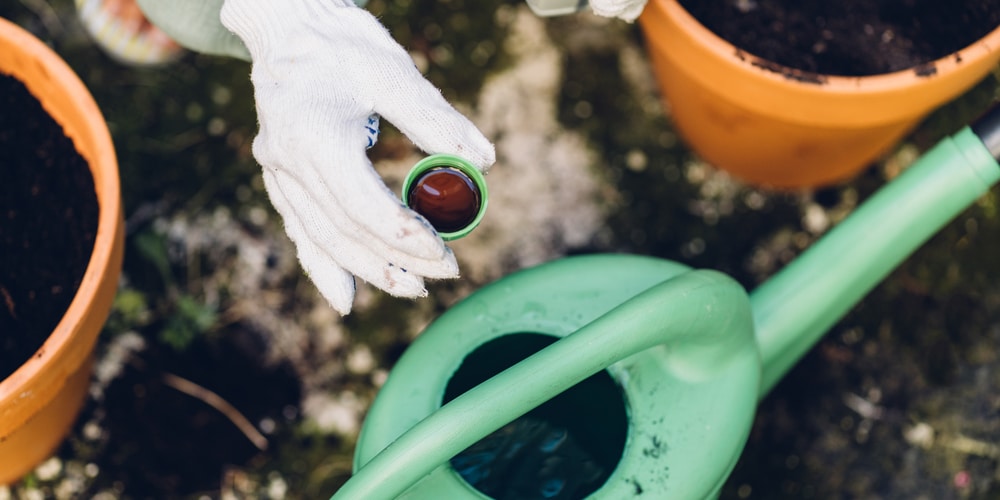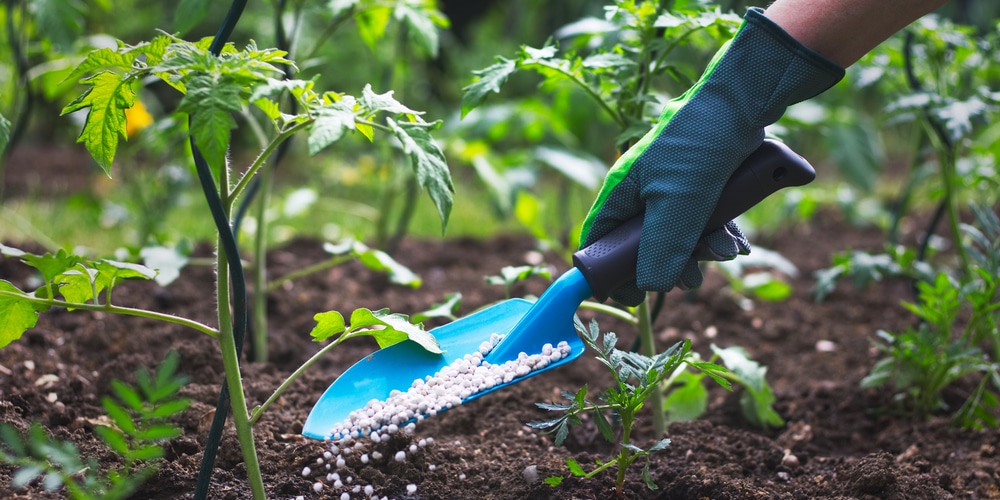Achieving your idyllic lawn is not only about mowing or watering it frequently. If you like the picture of an emerald backdrop of grass foliage or flowering plants that vibrantly dot your yard, then paying attention to your soil type and, more importantly, the nutrients it’s lacking is a critical part of lawn care. You may be wondering whether to use high phosphorus fertilizer.
Among other macronutrients vital for plant growth, phosphorous is one that’s often missing in many yards. It’s the one responsible for a plant’s healthy root system, and yes – it’s also responsible for helping those lovely flowers bloom.
Burnt cucumber skins, compost, manure, rock phosphate, hair, mushroom compost, and bonemeal are all excellent high phosphorous fertilizers. What are the differences, and which one should you choose?
High Phosphorous Fertilizer Types
If a soil test reveals your yard is deficient in phosphorous, there are different types of high-phosphorus fertilizer you can use to supplement this deficiency. Here are some of the most common ones:
Monoammonium Phosphate (MAP)
This type of fertilizer is one of the more popular and widely used in the fertilizer industry. It’s rich in nitrogen and phosphorous, the perfect combo for plants just starting to grow. MAP is also one of the more acidic fertilizers, so it’s best used on plants that prefer acidic conditions.
MAP is best applied on dry ground. For bare lawns, you can use a spreader to apply it evenly before seeding the soil.
Burnt Cucumber Skin
Among our list, burnt cucumber skins contain one of the highest amounts of phosphorus. It’s a by-product of the pickling process and is often used as an organic fertilizer. You may add this to your compost pile, which contains approximately 11% phosphorous making it one of the best out there in terms of weight.
Aside from phosphorous, it also contains potassium and has a fast release time. When added to a compost pile, its effect will only last for about two to three weeks. It’s worth noting that this fertilizer type doesn’t contain nitrogen. Using it in conjunction with other fertilizer types will give your plants the nutrients they need for a more well-rounded diet.
Hair
This may not be the first thing that comes to your mind regarding fertilizer, but hair is an excellent source of phosphorus. It’s also a good slow-release fertilizer that can last an average of six months in the ground. Compared to cucumber skins, hair contains 26% of phosphorus – definitely one of the highest out there.
Hair may also be an excellent nitrogen source, approximately 12%, but doesn’t contain any potassium. If you’re looking for a high-nitrogen and high-phosphorous fertilizer to add to your compost pile, this will definitely give your plants the nutrients needed.
Like burned cucumber skins, you may add this to your compost pile for best results. The great thing about using a compost pile is that you can add other phosphorous-rich sources or other nutrient-rich sources to achieve the perfect fertilizer mix for your plants.
Mushroom Compost
This type of compost is an excellent source of phosphorus, potassium, and nitrogen – the perfect combination for a balanced and healthy diet for your plants. It is a relatively inexpensive type of compost, also famous for its ability to retain soil moisture better than other types of compost.
Commercial Phosphorous Fertilizers
If you wish to go the chemical route, there are also commercial phosphorous fertilizers available. Also referred to as bloom boosters, you can use these in the later stages of plant growth.
Bone Meal
This is a by-product of the meat industry and is an excellent source of phosphorus. It has a medium-release time, ideal for those who are looking for the right balance of quick and slow-release fertilizers. It’s often used as a side-dressing fertilizer and is best mixed with the soil prior to planting.
Caution: Bone meal is known to cause fertilizer burns when used in high amounts. With that being said, it’s better to also add this to your compost pile and use it as an amendment rather than using it as your main fertilizer source.
Enriched Rock Phosphate
Enriched rock phosphate or phosphorite contains 30% phosphorous. It is an excellent choice if you’re growing crops and other vegetation.
It’s one of the slowest-release fertilizers on this list, and its effectiveness may last up to 5 years, or even more, depending on your soil type. This makes it an ideal option for those looking for a good source of phosphorous without having to re-apply every few weeks, months, or years.
Can Your Soil Have Too Much Phosphorous?
Yes, your soil can have too much phosphorous. This is often caused by an over-application of fertilizer or using the wrong type for your plants. In plants, unusually large amounts of phosphorous can stunt their growth.
You must test your soil before and after applying any fertilizer. This is to ensure that you’re not over- or under-fertilizing your plants.
High Phosphorus Fertilizer: Final Thoughts
Different types of high phosphorous fertilizer are available for those who wish to give their plants the necessary nutrients. Ultimately, at the end of the day, your choice of fertilizer depends on your budget, the type of plants you’re growing, and your soil quality.
Related Article: Low Nitrogen Fertilizer

